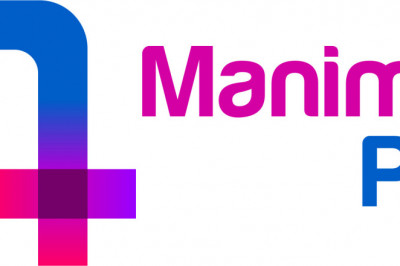views
Cyberattacks are becoming increasingly sophisticated, with hackers exploiting new vulnerabilities daily to disrupt businesses, steal sensitive information, and cripple entire systems. According to daily hacking news, ransomware, phishing attacks, and zero-day exploits pose some of the most significant threats to modern organizations.
If you're a business owner, IT professional, or simply someone who uses the internet, defending against these attacks isn't optional—it's essential. This blog outlines actionable strategies to shield your organization from evolving cyberattacks and minimize risks in a digital-first world.
What Are Modern Cyberattacks?
Modern cyberattacks utilize advanced tactics to exploit weaknesses in systems, applications, and end-users. These attacks aim to steal data, corrupt files, extort money, or gain unauthorized control over devices. Examples include ransomware locking critical systems, phishing emails targeting employees, or Distributed Denial of Service (DDoS) attacks overwhelming business operations.
The stakes are higher than ever. A 2023 report from Cybersecurity Ventures predicts global cybercrime costs will reach $10.5 trillion annually by 2025. This underlines the urgency of staying one step ahead of adversaries and implementing robust security measures.
Common Modern Cyber Attack Techniques
Hackers use various tactics to infiltrate systems. Understanding these methods is the first step in defending against them:
- Phishing: Fake emails trick users into revealing sensitive information like login credentials.
- Ransomware: Malware encrypts data and demands payment for restoration.
- Zero-Day Exploits: Attackers exploit software vulnerabilities before developers address them.
- Social Engineering: Hackers manipulate people into disclosing confidential information.
- DDoS Attacks: Flooding a system with traffic to make services unavailable.
Now that you know the basics, let's explore detailed strategies to fight back.
1. Implement Robust Cyber Security Protocols
Multi-Factor Authentication (MFA)
Relying on passwords alone is no longer safe. Using MFA, which requires an additional layer of verification (like a one-time code sent to your phone), enhances protection against unauthorized access.
Strong Password Policies
Encourage employees and users to use long, complex passwords. Password managers such as LastPass and Dashlane can simplify managing numerous credentials.
Endpoint Security
Endpoint protection platforms like CrowdStrike and Symantec monitor devices for suspicious behavior, detect threats in real-time, and isolate compromised systems.
2. Educate Your Workforce
Employee Training
Employees are the most common weak link in cybersecurity. Conduct training sessions to teach them how to spot phishing attempts, avoid malicious links, and handle confidential information securely.
Simulated Attacks
Employ simulation exercises, such as mock phishing emails, to test and evaluate the awareness level of your team. Tools such as KnowBe4 can automate this process.
3. Use Advanced Threat Detection & Response Tools
Cyberattack detection is critical. Businesses must adopt tools built to identify subtle signs of intrusion.
AI-Powered Security Systems
Sophisticated AI-driven platforms like Darktrace and IBM QRadar analyze patterns in data to detect and respond to potential threats before they escalate.
Network Monitoring
Tools like SolarWinds and PRTG actively monitor network activity, flagging unusual behavior that might indicate an ongoing attack.
Threat Intelligence Feeds
Stay ahead of hackers with daily hacking news updates provided by platforms like Palo Alto Networks or Recorded Future.
4. Secure Cloud Environments
With businesses increasingly relying on cloud-based solutions, securing these environments is non-negotiable.
Encrypt Cloud Data
Ensure all cloud-stored data is encrypted, whether at rest or in transit. Services like AWS and Azure offer robust encryption capabilities.
Regular Security Audits
Schedule regular security reviews of cloud configurations to spot vulnerabilities and misconfigured permissions. Third-party tools like CloudCheckr are great for this purpose.
Apply Access Controls
Use strict role-based access control policies. Only grant users the minimum permission they need to perform tasks.
5. Develop a Cyberattack Incident Response Plan
Even the best security measures can be breached. Having a solid incident response plan helps contain the damage and recover faster.
Predefined Roles and Responsibilities
Clearly define who does what during an attack, from IT leads to communication teams addressing the public.
Maintain Backups
Regularly back up all critical data using the 3-2-1 rule (3 copies, 2 types of storage media, 1 copy offsite). Solutions like Veeam and Acronis can simplify backup management.
Test Your Plan
Conduct drills or simulations to ensure your response plan functions in real-world scenarios.
6. Stay Up-to-Date with Security Patches
Many cyberattacks exploit vulnerabilities in outdated software. Regular updates ensure systems are protected from known vulnerabilities.
Automatic Updates
Enable automatic updates for critical software and operating systems to ensure you’re protected against the latest threats.
Patch Management Tools
Larger organizations can use tools like ManageEngine or WSUS to automate and monitor patch management processes.
7. Partner with Cybersecurity Experts
If in-house expertise is lacking, consider outsourcing to a Managed Security Service Provider (MSSP). Providers like SecureWorks or FireEye can help monitor, detect, and respond to threats efficiently.
Benefits of MSSPs
- 24/7 monitoring
- Proactive threat hunting
- Access to the latest security technologies
Strengthen Your Defenses Today
The rapid evolution of cyberattacks requires calculated, proactive measures. By implementing strong cybersecurity alerts protocols, educating your team, and leveraging cutting-edge technologies, your organization can significantly reduce risk while staying one step ahead of hackers.
Don't wait for a breach to happen—start defending against modern cyberattacks today.











